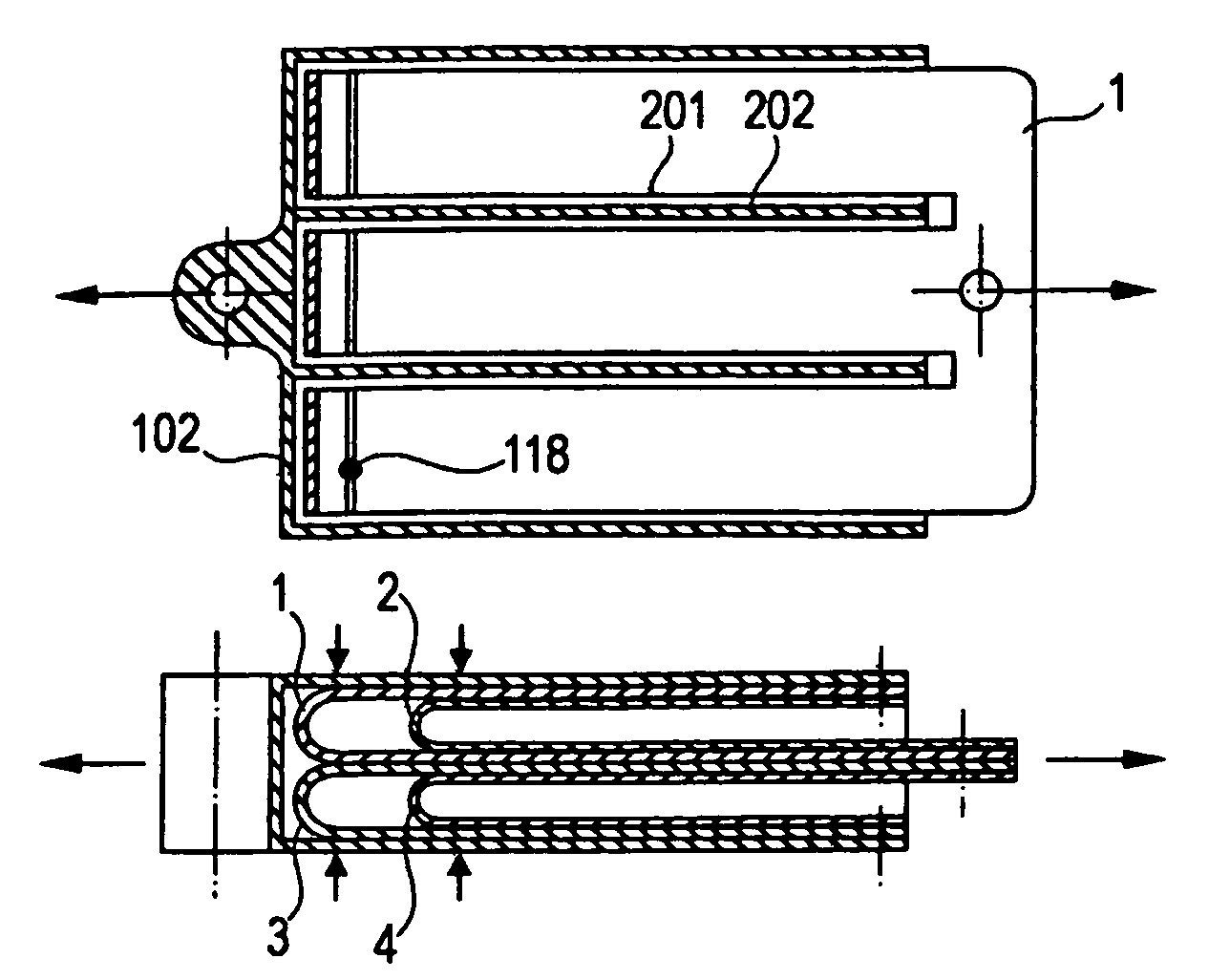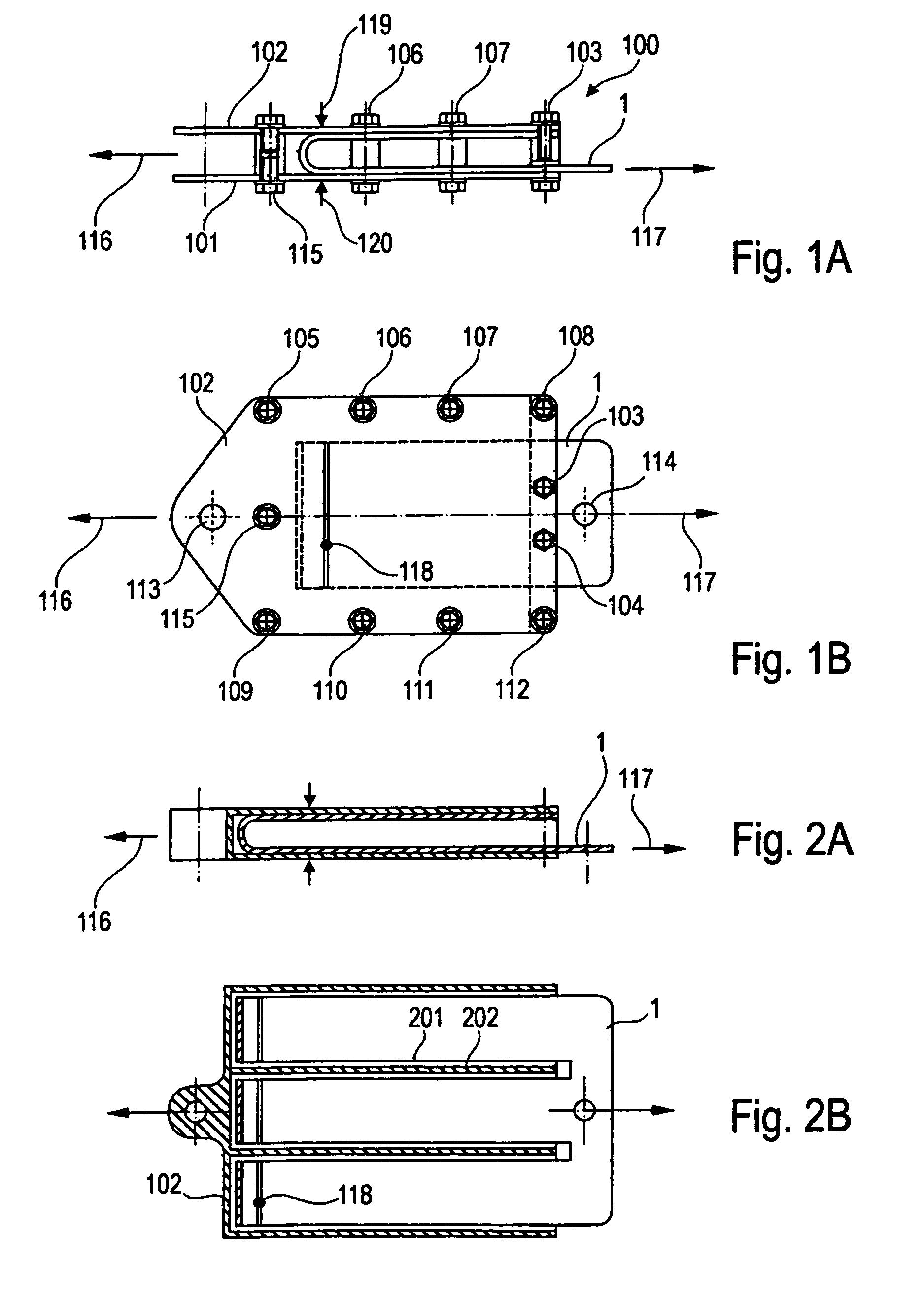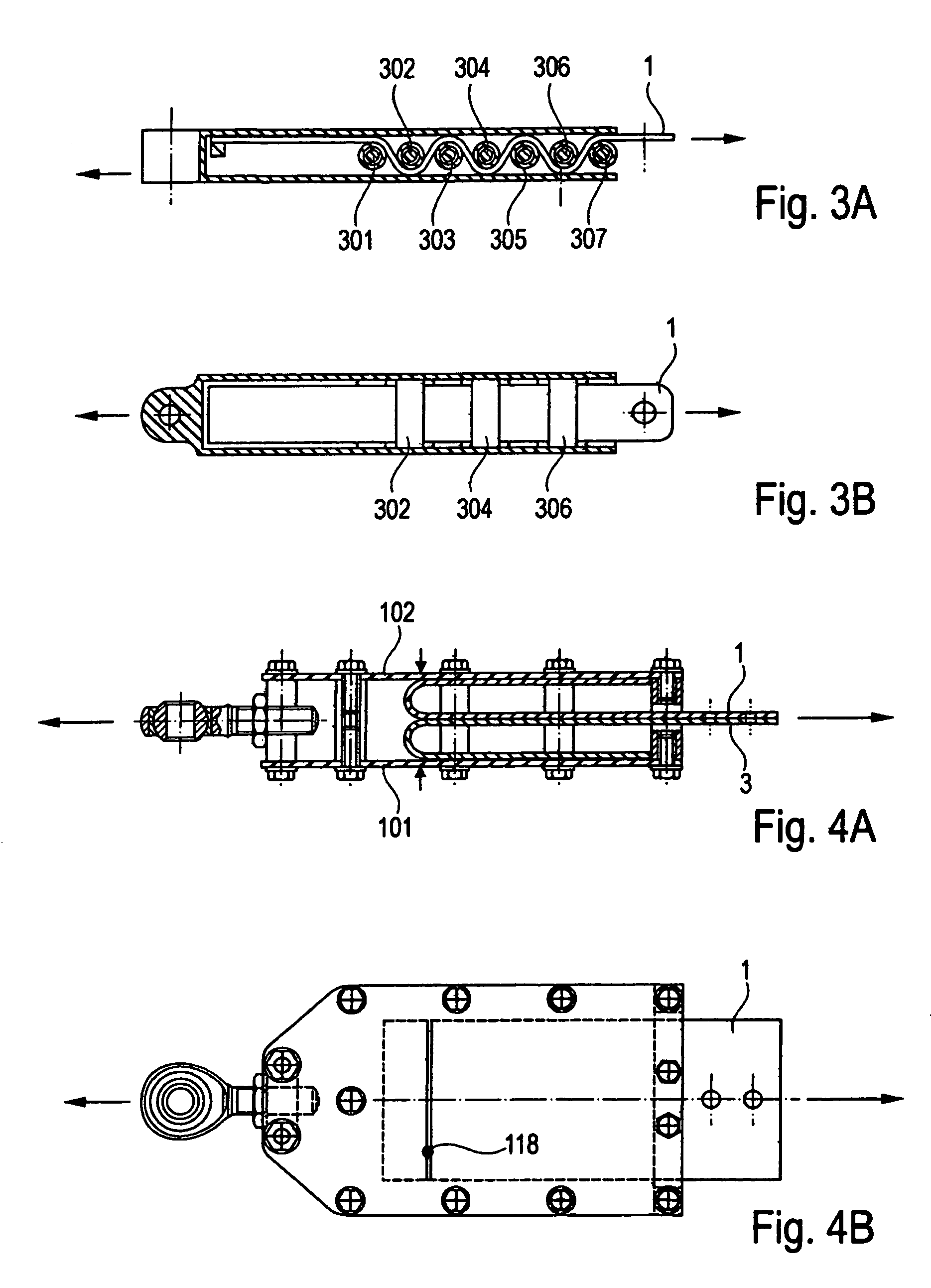Energy absorber for aircraft
a technology for aircraft and energy absorbers, applied in the direction of shock absorbers, elastic dampers, bumpers, etc., can solve the problems of limited mechanical load on the inboard device, limited mechanical load, and connected devices
- Summary
- Abstract
- Description
- Claims
- Application Information
AI Technical Summary
Benefits of technology
Problems solved by technology
Method used
Image
Examples
Embodiment Construction
[0068]In the following description of the figures, the same reference numerals are used for the same or similar elements.
[0069]The representations in the figures are schematic and not to scale.
[0070]FIG. 1A shows a schematic cross-sectional representation of an energy absorber according to an exemplary embodiment of the present invention. The energy absorber 100 has a lower housing region 101 and an upper housing region 102, between which the energy absorber element is mounted.
[0071]The energy absorber 100, in which this energy absorber elements 1 are installed, is subdivided basically into so-called single deckers with a sheet or with multiple sheets placed in one another and so-called multiple deckers with two or more sheets running opposite to one another (which can comprises respectively again multiple sheets placed in one another).
[0072]Thus, multiple sheets can be nested in one another, in order to achieve for example an optimization of the cover layer load, better volume use ...
PUM
 Login to View More
Login to View More Abstract
Description
Claims
Application Information
 Login to View More
Login to View More - R&D
- Intellectual Property
- Life Sciences
- Materials
- Tech Scout
- Unparalleled Data Quality
- Higher Quality Content
- 60% Fewer Hallucinations
Browse by: Latest US Patents, China's latest patents, Technical Efficacy Thesaurus, Application Domain, Technology Topic, Popular Technical Reports.
© 2025 PatSnap. All rights reserved.Legal|Privacy policy|Modern Slavery Act Transparency Statement|Sitemap|About US| Contact US: help@patsnap.com



